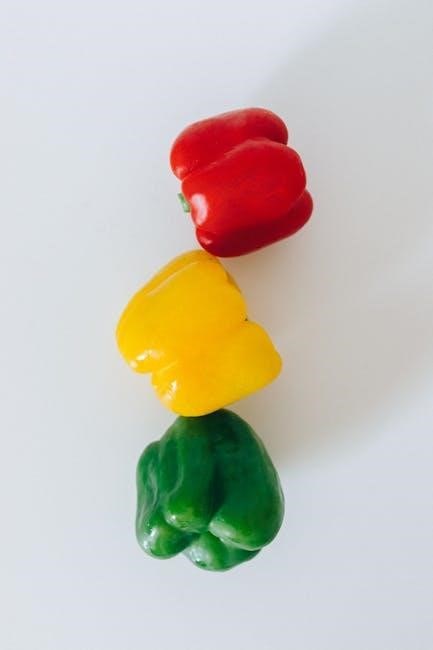A kitchen knife is an essential tool for any cook, offering versatility and precision for various culinary tasks․ Proper care ensures durability and enhances cooking experiences․
1․1 Importance of Kitchen Knives in Cooking
Kitchen knives are indispensable tools for preparing meals, enabling precise cutting, slicing, and chopping․ They provide control and efficiency, allowing chefs to handle ingredients with accuracy․ A good knife enhances creativity in cooking and ensures even preparation of dishes․ Properly maintained knives are safer, reducing the risk of accidents․ Investing in quality knives elevates cooking experiences, making meal prep faster and more enjoyable․ Whether for professional or home use, kitchen knives are the backbone of culinary artistry, transforming raw ingredients into delicious meals․
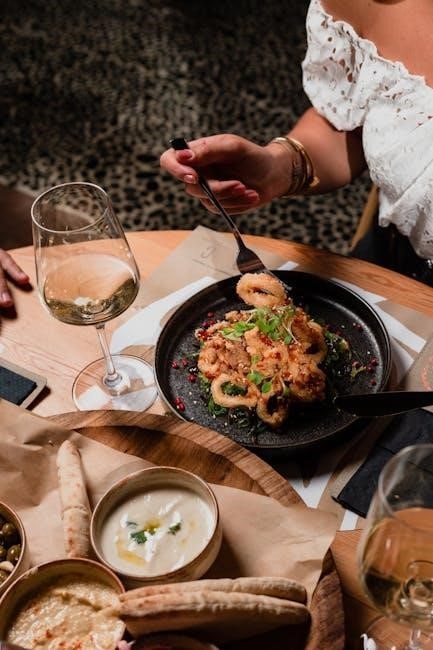
1․2 Brief History of Kitchen Knives
Kitchen knives have evolved significantly over centuries, beginning with stone tools used by early humans․ The development of metalworking led to bronze and iron knives, which were sharper and more durable․ By the Middle Ages, blacksmiths crafted specialized knives for various tasks․ The Industrial Revolution brought mass production, making high-quality knives accessible․ Today, modern materials like stainless steel and advanced manufacturing techniques ensure knives are sharper, rust-resistant, and ergonomically designed․ This rich history reflects human ingenuity and the essential role of knives in culinary arts․
Common Types of Kitchen Knives
Kitchen knives come in various styles, each designed for specific tasks․ Common types include Chef’s Knife, Paring Knife, Utility Knife, Bread Knife, and Cleaver․
2․1 Chef’s Knife: The Workhorse of the Kitchen
The Chef’s Knife, typically 8 to 10 inches long, is a versatile and indispensable tool in any kitchen․ Its curved, broad blade allows for efficient chopping, slicing, and mincing of ingredients․ Ideal for a variety of tasks, from preparing vegetables to filleting meat, this knife is a must-have for both professional chefs and home cooks․ Its balanced design ensures precision and control, making it the go-to knife for everyday culinary tasks․ A Chef’s Knife is often the first knife many cooks learn to use and master․
2․2 Paring Knife: Precision for Small Tasks
The paring knife, typically measuring 2 to 4 inches, is ideal for precision work․ Its compact size makes it perfect for peeling fruits, trimming vegetables, and coring tomatoes․ With a sharp, pointed tip, it excels at intricate tasks that require control and accuracy․ This knife is a must-have for detailed prep work, offering versatility in handling small or delicate ingredients․ Its ergonomic design ensures comfort during use, making it an essential tool for home cooks and professionals alike to achieve precise cuts and enhance culinary creativity․
2․3 Utility Knife: Versatility in the Kitchen
The utility knife, often between 4 to 7 inches, bridges the gap between a chef’s knife and a paring knife․ Its balanced design makes it ideal for a variety of tasks, from chopping vegetables to slicing meat․ With a versatile edge, it excels at both precision work and general cutting․ This knife is a practical addition to any kitchen, offering adaptability for everyday cooking needs․ Its moderate size ensures ease of use, making it a go-to tool for cooks seeking efficiency and control in preparing diverse ingredients․
2․4 Bread Knife: Slicing with Ease
The bread knife, with its long, serrated edge, is designed to slice through crusty bread and delicate pastries effortlessly․ Its unique blade prevents tearing, ensuring clean cuts․ Ideal for both hard-crusted loaves and soft interiors, this knife is a must-have for any kitchen․ Its versatility extends to slicing large melons or roasted meats, making it a practical tool for various tasks․ The bread knife’s ergonomic design and precise control make it indispensable for achieving perfect, even slices every time, elevating your culinary preparations to the next level․
2․5 Cleaver: Heavy-Duty Chopping
The cleaver, with its broad, sturdy blade, is perfect for heavy-duty tasks like chopping bones, meat, and hard vegetables․ Its robust design allows for powerful strikes, making it ideal for breaking down tough ingredients․ A cleaver is essential for professional chefs and home cooks alike, offering precision and strength․ Its balanced weight ensures control, while the flat surface can crush ingredients like garlic․ Despite its size, the cleaver is versatile, handling everything from splitting poultry to mincing herbs, making it a indispensable tool in any kitchen setup․
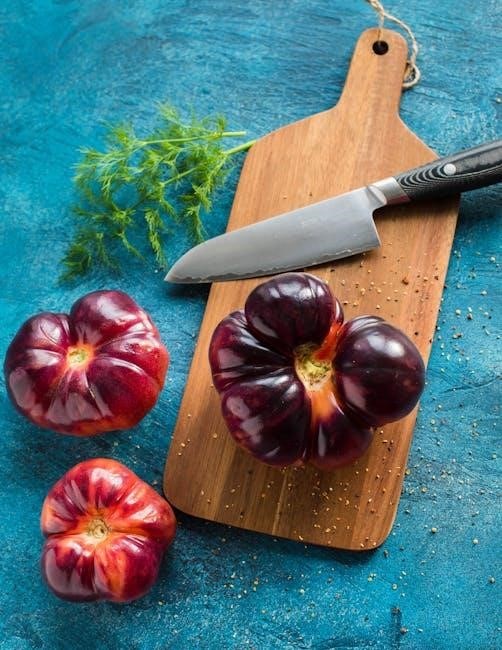
Essential Knife Skills and Techniques
Mastering essential knife skills is crucial for efficient and safe cooking․ This section covers fundamental techniques like chopping, slicing, and mincing, ensuring precision and control in the kitchen․
3․1 Basic Cutting Techniques: Chopping, Slicing, and Mincing
Mastering basic cutting techniques is fundamental for any cook․ Chopping involves cutting ingredients into small, uniform pieces, while slicing creates thin, even cuts․ Mincing requires finely chopping ingredients for dishes like sauces or marinades․ Each technique ensures ingredients cook evenly and enhances flavor distribution․ Proper knife handling and sharpness are key to achieving clean cuts․ Regular sharpening and honing of knives maintain their efficiency․ These foundational skills transform raw ingredients into culinary masterpieces, making cooking more efficient and enjoyable․ Practice these techniques to elevate your cooking to the next level․
3․2 How to Hold a Knife Correctly
Proper knife handling begins with a secure, controlled grip․ The pinch grip is recommended: hold the blade between your thumb and index finger, resting your middle finger on the handle․ This provides balance and precision․ Avoid gripping too tightly, as it can cause fatigue․ Position the knife at a 45-degree angle to the cutting board for optimal control․ Keep your fingers curled under and out of the blade’s path to prevent accidents․ A correct grip ensures safety, efficiency, and consistent cuts, making chopping, slicing, and mincing easier and more precise․
3․4 Knife Safety Tips
Knife safety is crucial to prevent accidents․ Always maintain a firm grip and keep your fingers curled under, away from the blade․ Cut on a stable surface and never slice towards your body․ Avoid using wet or slippery knives, as they can cause loss of control․ Store knives in a secure place, such as a block or protective sheath, out of reach of children․ Never leave sharp knives unattended or in water․ Regularly inspect knives for damage and handle them with care to minimize risks in the kitchen․

Knife Maintenance and Care
Proper maintenance ensures knives stay sharp and durable․ Regular sharpening and honing are essential, while cleaning and dry storage prevent rust and maintain performance․ Always handle with care․
4․1 How to Sharpen Kitchen Knives
Sharpening kitchen knives involves using a whetstone or electric sharpener to restore the blade’s edge․ Start by positioning the knife at the correct angle—typically 20° for straight-edge knives․ Gently draw the blade across the stone, repeating on both sides until sharp․ For serrated knives, use a diamond stone or sharpening steel․ Always maintain the same angle to ensure an even edge․ After sharpening, refine the blade with a honing steel to remove microscopic burrs, ensuring a smooth, razor-sharp finish․ Regular sharpening prevents dullness and extends the knife’s lifespan․
4․2 Honing vs․ Sharpening: What’s the Difference?
Honing and sharpening are often confused but serve distinct purposes․ Sharpening removes metal to create a new edge, restoring a dull blade to sharpness․ Honing, however, maintains the existing edge by aligning microscopic particles․ A sharpening stone or electric sharpener is used for sharpening, while a honing steel is typically used for honing․ Regular honing extends the time between sharpenings, preventing excessive blade wear․ Both processes are essential for maintaining knife performance and ensuring a razor-sharp edge for precise cutting and slicing tasks in the kitchen․
4․3 Cleaning and Storing Knives Properly
Proper cleaning and storage are crucial for maintaining the longevity and performance of kitchen knives․ Always hand-wash knives with mild soap and dry them thoroughly to prevent rust․ Avoid dishwashers, as the high heat and harsh detergents can damage the blade or handle․ For storage, use a knife block, magnetic strip, or protective sheaths to protect the edges․ Never store knives loose in a drawer, as this can lead to accidental damage or injury․ Regular care ensures your knives remain sharp, clean, and ready for use․
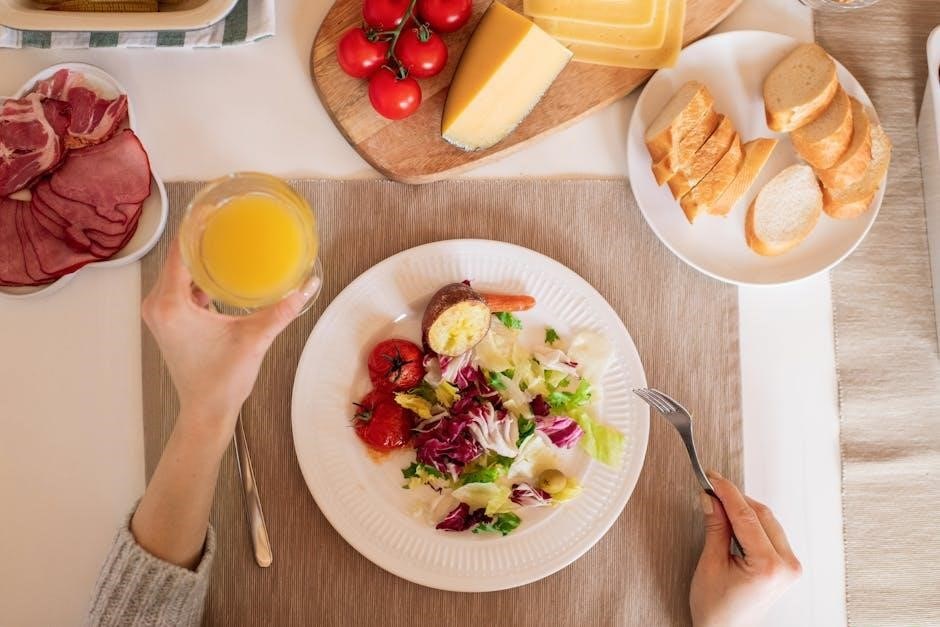
Choosing the Right Kitchen Knife
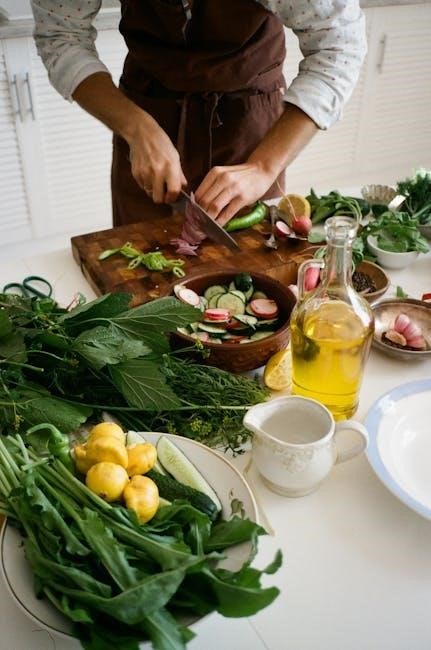
Selecting the right kitchen knife involves considering material, size, and ergonomics․ Stainless steel and high-carbon steel are popular for durability and sharpness․ Prioritize comfort and balance for optimal performance․
5․1 Factors to Consider: Material, Size, and Ergonomics
When selecting kitchen knives, consider the material for durability and sharpness․ Stainless steel is rust-resistant but harder to sharpen, while high-carbon steel holds edges well but requires maintenance․ Size varies by task, with chef’s knives being versatile for most jobs․ Ergonomics is crucial for comfort; a balanced handle ensures control and reduces fatigue during extended use․ Prioritizing these factors ensures the knife meets your cooking needs effectively and enhances overall performance in the kitchen․
5․2 Budget-Friendly vs․ High-End Knives
Budget-friendly knives offer durability and functionality at affordable prices, ideal for casual cooks or those starting their collection․ High-end knives, made from premium materials like high-carbon steel, provide superior sharpness and edge retention, catering to serious cooks and professionals․ While budget options may require more frequent sharpening, high-end knives justify their cost with long-term performance and ergonomic designs․ Both categories have their merits, and the choice depends on personal needs, cooking frequency, and willingness to invest in quality that lasts․

Advanced Topics in Kitchen Knives
6․2 Single-Bevel vs․ Double-Bevel Knives
Single-bevel knives, often used in Japanese cuisine, feature a sharper edge but require more skill; Double-bevel knives are versatile and easier to use, making them ideal for home cooks․
6․1 Japanese vs․ German Knives: Key Differences
Japanese knives are renowned for their exceptional sharpness and precision, often used by professionals for intricate cuts․ German knives, while slightly thicker, offer durability and versatility for everyday tasks․ Japanese blades typically feature a single-bevel edge, providing superior edge retention, while German knives often have a double-bevel edge for easier maintenance․ Japanese knives are usually made from high-carbon steel, ensuring a razor-sharp edge, whereas German knives may use stainless steel for durability․ Both are excellent choices, catering to different cooking styles and preferences, making them indispensable in any kitchen․
Single-bevel knives, often used in Japanese cuisine, feature a sharp, angled edge on one side, offering exceptional precision and thin cuts․ Double-bevel knives, common in Western kitchens, have edges sharpened on both sides, providing versatility for slicing, chopping, and mincing․ Single-bevel knives excel in tasks like filleting fish or slicing delicate meats but require more skill to use․ Double-bevel knives are easier to handle and maintain, making them ideal for everyday cooking․ The choice depends on the type of cooking and the desired level of precision, with both designs delivering outstanding performance in their respective roles․
6․3 Specialized Knives: Santoku, Fillet, and More
The Santoku knife, a Japanese favorite, excels at chopping vegetables with its straight edge and balanced design․ The Fillet knife, with its long, flexible blade, is perfect for delicate tasks like filleting fish or poultry․ Other specialized knives include the Nakiri, ideal for precise vegetable cutting, and the Boning knife, designed for removing bones from meat․ Each type offers unique advantages, catering to specific culinary needs and enhancing the efficiency of various kitchen tasks․ Understanding these specialized knives allows cooks to tackle diverse recipes with confidence and precision․
Your journey to mastering kitchen knives begins with understanding their roles and proper care․ Building a well-rounded collection will elevate your cooking skills and enhance every dish you create․
7․1 Building Your Ideal Knife Collection
Creating the perfect knife collection starts with essentials like a chef’s knife, paring knife, and bread knife․ These versatile tools cover most culinary tasks, ensuring efficiency in the kitchen․ As you gain experience, consider adding specialized knives such as a cleaver for heavy-duty chopping or a fillet knife for precision․ Prioritize quality materials, ergonomic handles, and proper maintenance to extend the life of your blades․ Expand your collection gradually, focusing on the tools that best suit your cooking style and needs․
7․2 Final Tips for Mastery
Mastery begins with consistent practice and attention to detail․ Always use proper cutting techniques and maintain sharp edges for precision․ Regular sharpening and honing will extend the life of your knives․ Store them safely to prevent damage and injury․ Experiment with different knives to find what suits your style․ Keep your workspace organized to enhance efficiency․ Finally, stay curious and explore new skills to elevate your cooking․ With dedication, your knife skills will become second nature, transforming everyday cooking into a seamless, enjoyable experience․
